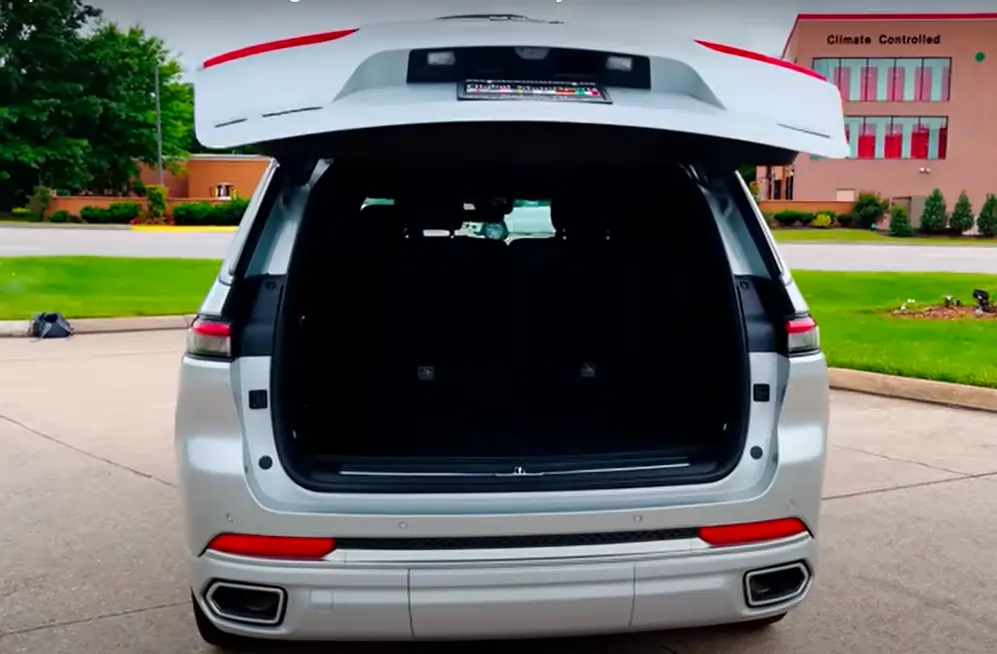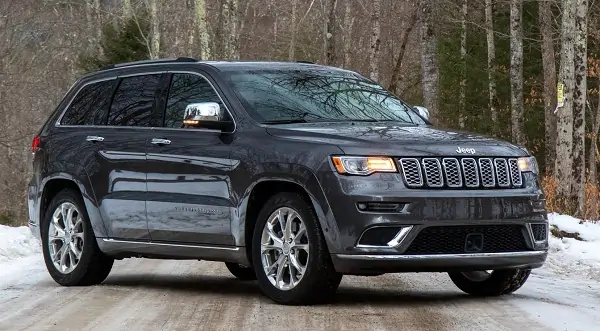To put a jeep wrangler in 4-wheel drive for snow, engage the transfer case lever and shift into 4h mode.
Driving in snow can be challenging and dangerous, especially if you don’t have the right vehicle and skills.
However, if you own a Jeep Wrangler, you have an advantage over other cars, as you can use the four-wheel drive (4WD) system to improve traction and stability on slippery roads.
In this blog post, we will explain to you how to put your Jeep Wrangler in 4 wheel drive for snow, and what are the benefits and precautions of doing so.
How to Put Jeep Wrangler in 4 Wheel Drive for Snow
To put your Jeep Wrangler in 4WD for snow, you need to follow these steps
- Bring your Jeep to a complete stop and keep your foot on the brake pedal.
- Move the gear shift selector to Neutral (N).
- Move the four-wheel drive selector to 4H (high gear) or 4L (low gear), depending on the road conditions and your speed. 4H is suitable for driving on loose or slippery surfaces, while 4L is used for very slippery or steep roads. However, you should not exceed 25 mph while in 4L to avoid damage.
- Move the gear selector back to Drive (D) and continue driving.
By using 4WD for snow, you can increase the power and torque of your Jeep Wrangler, which can help you overcome obstacles and avoid getting stuck.
However, you should also be careful not to overestimate your vehicle’s capabilities, as 4WD does not improve braking or steering.
You should always drive cautiously and adjust your speed according to the weather and road conditions.
Understanding The Importance Of 4 Wheel Drive
Snowy conditions can present challenges for any vehicle, but a jeep wrangler equipped with 4 wheel drive (4wd) can navigate these treacherous terrains with ease. To truly harness the power of your jeep’s 4wd system, it’s essential to understand its benefits and how it works.
In this section, we will explore the benefits of using 4wd in snowy conditions and delve into the science behind a jeep wrangler’s 4wd system.
Benefits Of Using 4 Wheel Drive In Snowy Conditions
When the snow starts falling, engaging your jeep wrangler’s 4wd system can make a world of difference. Here are some key benefits to consider:
- Enhanced traction: 4wd provides power to all four wheels simultaneously, helping to distribute traction evenly. This means better grip and control on slippery surfaces, such as icy or snow-covered roads.
- Increased stability: With power sent to each wheel, 4wd helps maintain stability and prevents wheel spin. This is particularly important when navigating through deep snow or steep slopes, where maintaining control is crucial.
- Improved off-road capabilities: Jeep wranglers are renowned for their off-road prowess, and 4wd plays a vital role in this reputation. Whether you’re traversing through snowy trails or venturing off the beaten path, 4wd ensures your wrangler can handle the terrain with ease.
- Peace of mind: Driving in snow can be nerve-wracking, but having 4wd gives you added peace of mind. Knowing that your vehicle is optimized to handle adverse conditions can boost your confidence and make your winter journeys safer.
The Science Behind A Jeep Wrangler’S 4 Wheel Drive System
Understanding how your jeep’s 4wd system functions can help you make the most of its capabilities. Here’s a simplified breakdown of the science behind it:
- Power distribution: A jeep wrangler’s 4wd system utilizes differentials and transfer cases to distribute power to all four wheels. These components ensure that power is evenly distributed, allowing each wheel to contribute to traction.
- Selectable modes: Most jeep wranglers offer multiple 4wd modes, including 2-high (2h), 4-high (4h), and 4-low (4l). 2h is ideal for normal road conditions, while 4h engages all four wheels for improved traction. 4l provides maximum torque and is typically used for off-road or extreme weather conditions.
- Locking differentials: Some jeep wrangler models are equipped with locking differentials, which ensure power is distributed evenly across the front and rear axles. This feature maximizes traction by preventing wheel slippage and maintaining a consistent power flow.
Understanding the benefits and functionality of your jeep wrangler’s 4wd system is crucial for making informed decisions when it comes to tackling snowy conditions. So, the next time the snow starts to fall, engage your 4wd system and confidently traverse through the winter wonderland.
Stay safe and enjoy the thrill of winter adventures with your capable jeep wrangler!
What is The Best 4 Wheel Drive Setting for Snow
Snow can be a beautiful and fun phenomenon, but it can also pose a challenge for driving. Depending on the amount and type of snow, as well as the road conditions and your vehicle’s capabilities, you may need to use a different 4-wheel drive setting to ensure safety and performance.
Here is a brief guide on what is the best 4-wheel drive setting for snow:
- If the snow is light and the road is mostly clear, you may not need to use 4-wheel drive at all. You can drive normally with 2-wheel drive, but be careful and avoid sudden braking or acceleration.
- If the snow is moderate and the road is slippery, you can use 4H (high gear) to provide more traction and stability. 4H allows you to drive at normal speeds, but it locks all four wheels together, which can help you avoid skidding or spinning. You should engage 4H before you encounter slippery conditions, and disengage it when you return to normal roads.
- If the snow is deep and the road has very low traction, you can use 4L (low gear) to give you more power and torque. 4L is suitable for driving through deep snow, steep hills, or other extreme situations.
However, you should only use 4L at very low speeds (less than 25 mph), and only when necessary. You should also stop your vehicle and shift to neutral before engaging or disengaging 4L1.
Remember that 4-wheel drive does not improve your braking or steering ability, so you should always drive cautiously and adjust your speed according to the weather and road conditions.
You should also check your owner’s manual for specific instructions on how to use your 4-wheel drive system correctly
Activating And Engaging Your Jeep Wrangler’S 4 Wheel Drive
When it comes to tackling snow-covered roads, having 4 wheel drive can make all the difference. If you own a jeep wrangler, activating and engaging its 4 wheel drive is a straightforward process that can give you greater traction and control in slippery conditions.
In this section, we will explore how to use the transfer case to engage 4 wheel drive, understand the different 4 wheel drive modes, and activate 4 wheel drive in your jeep wrangler.
Using The Transfer Case To Engage 4 Wheel Drive:
- The transfer case is a critical component of your jeep wrangler’s drivetrain system that enables you to engage 4 wheel drive. It allows power to be distributed to all four wheels simultaneously, providing better traction on challenging terrains such as snowy roads.
- To engage the 4 wheel drive mode, start by locating the transfer case lever. In a jeep wrangler, the transfer case lever is typically situated near the center console or on the floor between the driver and passenger seats.
- Once you’ve located the transfer case lever, make sure your jeep wrangler is at a complete stop before engaging 4 wheel drive. This is to prevent any damage to the drivetrain system.
- With your jeep wrangler in park or neutral, depending on the specific model, pull the transfer case lever into the desired 4 wheel drive mode. Common options include 4h (high), 4h part-time, and 4l (low). Refer to your owner’s manual for the specific 4 wheel drive options available in your jeep wrangler model.
- After engaging 4 wheel drive, slowly shift your wrangler into drive or the appropriate gear, and you’re ready to navigate snowy roads with enhanced traction and stability.
Understanding The Different 4 Wheel Drive Modes:
- 4h (high) mode is suitable for light snow and slippery road conditions. It provides better traction by sending power to all four wheels while allowing for faster speeds.
- 4h part-time mode is ideal for situations where you anticipate encountering more challenging terrain or deeper snow. It distributes power evenly to all four wheels, providing maximum traction. However, it is important to note that 4h part-time mode is not intended for use on dry or high-traction surfaces due to the potential for binding and driveline strain.
- 4l (low) mode is designed for extreme conditions, such as deep snow or off-road trails. It delivers maximum torque to all four wheels, allowing your jeep wrangler to crawl over difficult obstacles with ease. Use 4l mode when you require additional power and traction at low speeds.
Activating 4 Wheel Drive In Your Jeep Wrangler:
- Before engaging 4 wheel drive, make sure to familiarize yourself with the specific instructions provided in your jeep wrangler’s owner’s manual. Different models may have variations in the activation process.
- Once you understand the process, follow these general steps to activate 4 wheel drive:
- Bring your jeep wrangler to a complete stop and shift into park or neutral.
- Locate the transfer case lever near the center console or between the driver and passenger seats.
- Pull the transfer case lever into the desired 4 wheel drive mode, such as 4h or 4l.
- After engaging 4 wheel drive, slowly shift into drive or the appropriate gear.
- Slowly begin your journey in snowy conditions, ensuring you maintain a safe speed and exercise caution.
Remember, activating and engaging 4 wheel drive in your jeep wrangler can greatly improve your vehicle’s performance and safety on snow-covered roads. Mastering this process will offer you greater confidence when navigating challenging winter conditions.
How do You Turn on 4 Wheel Drive on a Jeep Wrangler?
A Jeep Wrangler is a versatile vehicle that can handle different terrains and weather conditions, thanks to its four-wheel drive (4WD) system.
The 4WD system allows the Jeep to distribute power to all four wheels, which can improve traction, stability, and performance.
However, to use the 4WD system properly, you need to know how to turn it on and off depending on the situation.
Here is a simple guide on how to turn on 4 wheel drive on a Jeep Wrangler:
- First, you need to locate the transfer case shifter lever, which is next to the driver’s seat and to the left of the gear shift. The lever has four positions: 2H (two-wheel drive high), 4H (four-wheel drive high), N (neutral), and 4L (four-wheel drive low).
- Second, you need to decide which 4WD mode you want to use. 4H is suitable for driving on loose or slippery surfaces, such as dirt roads, sand, or snow. 4L is used for very slippery or steep roads, such as mud, rocks, or hills. However, you should not exceed 25 mph while in 4L to avoid damage.
- Third, you need to follow the steps for shifting into the desired 4WD mode. To shift into 4H, you can either bring your Jeep to a complete stop and keep your foot on the brake pedal, or drive under 40 mph. Then, move the gear shift selector to Neutral (N) and pull the transfer case shifter lever from 2H to 4H. Finally, move the gear selector back to Drive (D) and continue driving. To shift into 4L, you need to bring your Jeep to a stop and keep your foot on the brake pedal. Then, move the gear shift selector to Neutral (N) and pull the transfer case shifter lever from 2H or 4H to N and then to 4L. Finally, move the gear selector back to Drive (D) and continue driving at low speed.
- Fourth, you need to remember to switch back to 2H when you return to normal road conditions. To do so, you need to bring your Jeep to a stop and keep your foot on the brake pedal. Then, move the gear shift selector to Neutral (N) and push the transfer case shifter lever from 4H or 4L to N and then to 2H. Finally, move the gear selector back to Drive (D) and continue driving.
By following these steps, you can turn on 4WD on your Jeep Wrangler and enjoy its off-road capabilities.
However, you should always drive cautiously and adjust your speed according to the weather and road conditions.
You should also check your owner’s manual for specific instructions on how to use your 4WD system correctly
Practical Tips For Navigating Snowy Terrain
Driving in snowy conditions can be challenging, especially if you’re not familiar with how to properly use your jeep wrangler’s 4-wheel drive feature. Snow-covered roads often lack traction, making it essential to adjust your driving techniques for optimal traction, recognize the signs of wheel slippage, and consider using additional traction devices in extreme conditions.
Here are some practical tips to help you navigate snowy terrain:
Adjusting Your Driving Techniques For Optimal Traction
- Reduce your speed: Slow down and drive at a safe, controlled speed when navigating snowy roads. This allows your tires to maintain better traction and improves your ability to maneuver safely.
- Increase following distance: Leave extra space between your vehicle and the one in front of you to provide ample time to stop. Snowy roads often require longer stopping distances due to reduced traction.
- Smooth and gradual inputs: Avoid sudden acceleration, braking, or steering movements, as these actions can cause your wheels to lose traction. Instead, apply gas and brake pedals smoothly and steer gently.
- Feather the brakes: When braking on slippery surfaces, lightly apply pressure to the brakes rather than slamming them down. This technique helps prevent wheel lock-up and allows your vehicle to maintain better control.
Recognizing The Signs Of Wheel Slippage
- Feeling of loss of control: If you experience a sensation of your vehicle veering out of control or sliding, it is likely that your wheels are slipping. Stay calm and take corrective action immediately.
- Tires spinning without forward movement: If you notice your tires spinning in place without propelling your vehicle forward, it indicates that your wheels are slipping on the snow or ice. Take measures to regain traction.
- Lack of response to steering inputs: In cases where your vehicle is not responding adequately to steering movements, such as sliding in a different direction than intended, it suggests wheel slippage. Adjust your driving technique accordingly.
Using Additional Traction Devices In Extreme Conditions
- Snow chains: Snow chains are a popular and effective option for providing extra traction on snowy roads. They can be installed on your jeep’s tires to enhance grip and control.
- Snow socks: Similar to snow chains, snow socks are fabric covers that fit over your tires. They improve traction on slippery surfaces and can be a convenient alternative to traditional chains.
- Studded snow tires: If you frequently encounter icy conditions, consider investing in studded snow tires. These special tires have metal or rubber studs embedded in the tread to provide superior traction on ice.
- Traction pads or mats: Traction pads or mats can be placed under your tires when you’re stuck in snow or ice. These portable devices provide additional grip and enhance your ability to get unstuck.
Remember, when operating your jeep wrangler in 4-wheel drive mode, always engage it before encountering slippery conditions. Familiarize yourself with your vehicle’s manual and practice these tips to ensure a safer and more enjoyable driving experience in snowy terrain. Stay vigilant, adapt to the conditions, and drive with caution to minimize the risk of accidents.
Maintenance And Preparation For Snowy Driving
Ensuring Your Jeep WranglerS 4 Wheel Drive System Is In Good Working Condition
Before venturing out in the snow, it’s crucial to make sure that your jeep wrangler’s 4 wheel drive system is in optimal working condition. This will ensure that you have the necessary traction and control to navigate through the snowy terrain.
Here are some key points to keep in mind:
- Check the 4 wheel drive engagement: Ensure that your jeep’s 4 wheel drive system engages smoothly without any unusual noises or delays. This can be done by moving the shift lever or engaging the buttons while the vehicle is stationary.
- Inspect the transfer case: Take a look at the transfer case, paying attention to any signs of leaks or damage. The transfer case is responsible for distributing power to the front and rear axles, so it’s important to ensure it’s functioning properly.
- Verify proper fluid levels: Check the fluid level in the transfer case, as well as the front and rear differentials. Low fluid levels can affect the performance of the 4 wheel drive system, so it’s essential to top up if necessary.
- Test the 4 wheel drive on a safe surface: Find an open area with low traction, such as a gravel road or an empty parking lot, to test the 4 wheel drive system. This will allow you to ensure that all four wheels are receiving power and that the system engages and disengages smoothly.
Proper Tire Maintenance And Selection For Snowy Conditions
Tire maintenance and selection play a vital role in optimizing your jeep wrangler’s performance in snowy conditions. Here are some key points to consider:
- Check tire pressure regularly: Cold temperatures can cause your tire pressure to drop, so it’s crucial to keep an eye on it and ensure it’s at the recommended levels. Underinflated tires can affect traction and handling.
- Inspect tire tread depth: Adequate tread depth is essential for providing grip on snowy surfaces. Use a tread depth gauge to measure the depth, and if it’s below 5/32 inches, consider replacing the tires.
- Consider snow tires: If you frequently encounter snowy conditions, investing in a set of snow tires can significantly enhance traction and control. Snow tires are specifically designed with tread patterns and rubber compounds to excel in winter conditions.
- Use tire chains when necessary: In extreme snow and icy conditions, tire chains can provide additional traction. Make sure to follow the manufacturer’s instructions for proper installation and usage.
Preparing An Emergency Kit For Winter Driving Scenarios
When driving in snowy conditions, it’s essential to be prepared for unexpected situations. Putting together an emergency kit for winter driving scenarios can help ensure your safety and provide peace of mind. Here are some items to include:
- Blankets and extra warm clothing
- Non-perishable food and bottled water
- Emergency flares or reflective triangles
- Jumper cables
- Ice scraper and snowbrush
- Flashlight and extra batteries
- First aid kit
- Shovel
- Tow strap or rope
- Portable phone charger
Remember, preparation is key when it comes to driving in the snow. By ensuring your jeep wrangler’s 4 wheel drive system is in good working condition, maintaining proper tire care, and having an emergency kit on hand, you’ll be ready to tackle any snowy driving scenario with confidence and peace of mind.
Stay safe out there!
Expert Advice: Techniques For Handling Challenging Snowy Situations
Driving a jeep wrangler in snowy conditions can present unique challenges. Whether you’re navigating icy patches, tackling steep inclines and declines, or recovering from getting stuck in deep snow, it’s important to be well-prepared and armed with the right techniques.
In this section, we will provide expert advice on handling these snowy situations to ensure a safe and enjoyable drive.
Handling Icy Patches And Black Ice
Icy patches and black ice are major concerns when driving in the snow. These slippery conditions can make it difficult to maintain control of your jeep wrangler. Here are some techniques to handle them effectively:
- Approach icy patches with caution, reducing your speed and avoiding sudden movements.
- Give yourself plenty of distance when braking to allow for a longer stopping time.
- Engage your 4-wheel drive system before encountering icy patches to improve traction.
- If you notice black ice, refrain from sudden acceleration, braking, or turning. Maintain a steady speed and keep your steering movements smooth and gradual.
- Consider using snow chains or studded tires for added grip on icy surfaces.
Navigating Steep Inclines And Declines In Snowy Terrain
When faced with steep inclines and declines in snowy terrain, it’s essential to know the right techniques to safely maneuver your jeep wrangler. Here are some tips to keep in mind:
- Prioritize maintaining a consistent speed while ascending or descending steep inclines. Avoid sudden accelerations or decelerations that can cause loss of traction.
- Use low gears to engage the engine’s power and maintain control over the vehicle.
- Keep a safe distance from other vehicles, allowing ample room to slow down or stop if necessary.
- When descending, utilize engine braking by shifting into a lower gear. This helps control your speed and prevents your brakes from overheating.
- Be aware of potential obstacles or hazards on the incline or decline that may require adjustments to your driving strategy.
Recovering From Getting Stuck In Deep Snow
Even with the best preparations, it’s still possible to get stuck in deep snow. Here are some steps to recover from this situation and get back on track:
- Before attempting to drive out, make sure to clear any snow from around your tires and underneath the jeep.
- Use a shovel, traction mats, or even small branches to create some traction under the tires.
- Engage your 4wd system and, if possible, lock the differentials for maximum traction.
- Rock your jeep back and forth by shifting from drive to reverse, gently accelerating and decelerating. This can help create momentum and free your vehicle from the snow.
- If all else fails, seek assistance from a reliable towing service or enlist the help of other vehicles in the vicinity.
By following these expert techniques and staying prepared, you can confidently navigate snowy conditions in your jeep wrangler. Remember to always prioritize safety and adapt your driving style to the specific challenges presented by the snowy terrain. Stay alert, take it slow, and enjoy the winter wonderland!
Frequently Asked Questions Of How To Put Jeep Wrangler In 4 Wheel Drive For Snow
How Do I Put My Jeep Wrangler In 4 Wheel Drive For Snow?
To put your jeep wrangler in 4 wheel drive for snow, start by stopping the vehicle and putting it in neutral. Then, shift the transfer case lever into the 4h (4 high) position. Finally, engage the clutch and drive at a safe speed for icy conditions.
Can I Put My Jeep Wrangler In 4 Wheel Drive While Driving?
No, it is not recommended to put your jeep wrangler in 4 wheel drive while driving. To avoid damaging the transfer case, always shift into 4 wheel drive before you start driving and while the vehicle is at a complete stop.
How Does 4 Wheel Drive Work In A Jeep Wrangler?
In a jeep wrangler, 4 wheel drive works by sending power to all four wheels simultaneously. This provides increased traction and control, especially in off-road or slippery conditions like snow. Jeep wrangler models are equipped with a transfer case that allows you to switch between 2h (2 wheel drive), 4h (4 high), and 4l (4 low).
Can I Use 4 Wheel Drive On Pavement?
While you can use 4 wheel drive on pavement, it is generally not recommended for prolonged use on dry or well-maintained roads. 4 wheel drive is designed to be used in off-road situations or on slippery surfaces like snow or ice.
Using 4 wheel drive on pavement can cause excessive wear and tear on the drivetrain components.
How Do I Disengage 4 Wheel Drive On My Jeep Wrangler?
To disengage 4 wheel drive on your jeep wrangler, slow down and put the vehicle in neutral. Then, shift the transfer case lever into the 2h (2 wheel drive) position. Finally, engage the clutch and continue driving. This will disengage the front wheels and return your vehicle to 2 wheel drive mode.
Conclusion
Knowing how to put your jeep wrangler in 4-wheel drive mode is essential for navigating snowy conditions. By following the steps outlined in this blog post, you can safely and effectively engage the 4-wheel drive system in your jeep. Remember to always engage 4-wheel drive before encountering snowy or slippery roads, and to disengage it once the conditions improve.
Regular maintenance and proper use of the 4-wheel drive system are important for the longevity and performance of your jeep. So, whether you’re planning a winter adventure or simply need to get around town during a snowstorm, knowing how to put your jeep wrangler in 4-wheel drive will give you the confidence and control you need to tackle any winter weather.
Stay safe and enjoy your snowy adventures!














Leave a Reply